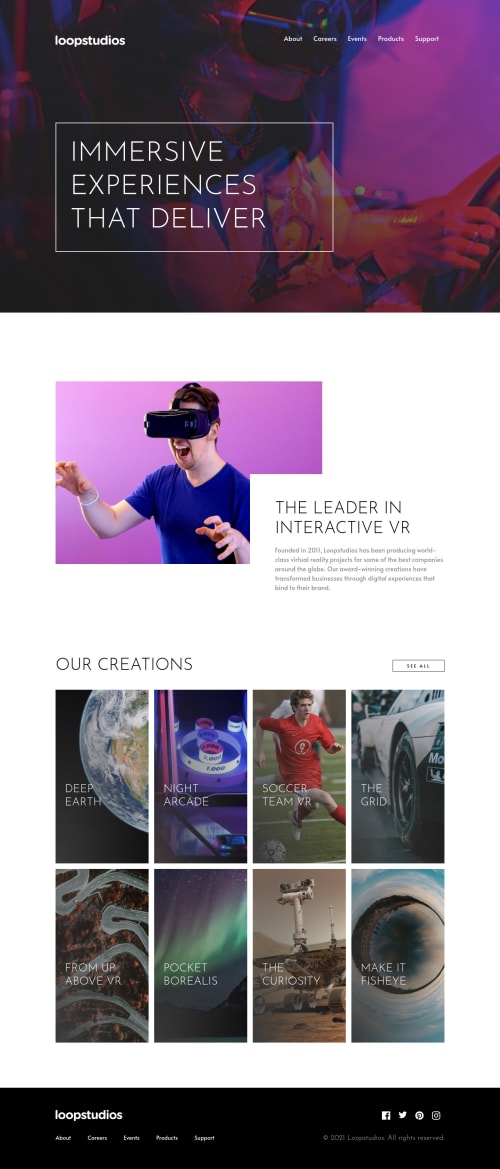Loopstudios Landing Page

Solution retrospective
Hey everyone, just completed another coding challenge. Let me know what you think!
Thank you! 😀
Please log in to post a comment
Log in with GitHubCommunity feedback
- @M-Kgobe
Hi Your solutions looks pretty good.
Your github repo does not work, you might have posted an incorrect link or something. you also seem to have a lot of issues in your report, check it out.
Marked as helpful - @pikapikamart
Hey, awesome job on this one. Layout in desktop looks really good and the mobile state is good as well. Though you are using too much screen size for the mobile layout, I already get the mobile layout at point 1200px, which desktop layout should still be present at that point. Adjusting breakpoint will be really great.
Some other suggestions would be:
- The
altfor the website logo should bealt="loopstudios", the image already have the text needed better using it. You usually use the website name for the website-logo'salt. - The list of links in the
headershould be inside anavelement, since those are your navigational links. - The text usage for all the capital letters, for example, the hero-text, when you have a design that needs the text capitalized all, you don't explicitly type the sentenced in capital letters in html, because if you do that, assistive tech will read that sentence, letter by letter. Instead just use regular text like "Immersive experiences that delivers" and just use
text-transform: uppercaseon the css. Same goes for every capitalized text on your site. - Always have a
mainelement that will wrap the main content of you website. A typical structure would look like:
<header /> <main /> <footer />- The second image after the hero-section should be
alt=""I think or maybe use more meaningfulaltvalue. - "SEE ALL" is better to be anchor tag
arather thanbuttonsince it looks more like a link to page to "see all" collections. - Avoid using multiple
h1on a webpage. Only use at least 1h1per page. - You don't need javascript to use the hover effect on your element. You don't need those
mousenterlisteners, you could just use:hoverproperty on the css to do those. For stylings, let css handle it, you don't need to use those if you are just applying effects for the:hoverstate.
FOOTER
- Website logo should use
alt="loopstudios". - Social media links should be inside anchor tag
asince those are "links". Eachatag that wraps the social media, should havearia-labelorsr-onlytext, to which the value will be the name of the social media. - The bottom links should be inside
navelement, since those are still your navigational links.
MOBILE
- The hamburger menu should be using
buttonelement and notdiv. When there is an interactive component, always interactive element. - The
buttonwill should also havearia-labelattribute or ansr-onlytext inside it, describing what thebuttonshould do, a sample text could be "navigation menu dropdown". Thebuttonshould also usearia-expandedattribute, the value will be changed by javascript, eithertrueif the user toggles it or false, it the user does not. - You don't have to create a separate list of links for the dropdown. You should use the original links, reuse html elements so that your markup won't be bloated.
Just those above, still, great job on this one.
- The
Join our Discord community
Join thousands of Frontend Mentor community members taking the challenges, sharing resources, helping each other, and chatting about all things front-end!
Join our Discord